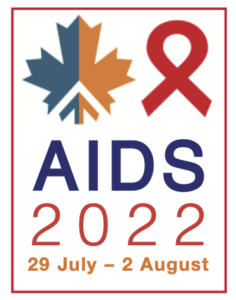Dolutegravir-based ART in children and adolescents: effective in six African countries
3 August 2022. Related: Conference reports, Antiretrovirals, Treatment strategies, Paediatric care, World AIDS 24 Montreal 2022.
Polly Clayden, HIV i-Base
 Dolutegravir (DTG)-based ART achieved and mostly maintained viral load suppression in children and adolescents in real-world settings in seven sites in six African countries.
Dolutegravir (DTG)-based ART achieved and mostly maintained viral load suppression in children and adolescents in real-world settings in seven sites in six African countries.
These findings from a retrospective chart review, conducted by Baylor International Pediatric AIDS Initiative, were presented at AIDS 2022.
The study covered the period from January 2016 to December 2021. It included children and adolescents ages 0 to 19 years old receiving DTG-based ART at clinics in Botswana, Eswatini, Lesotho, Malawi, Tanzania, and Uganda.
There were 11,799 children and adolescents who received DTG during the study period. Fifty six per cent were female. Most were over 10 years old: 10 to 14 years, 36.6% and 15 to 19 years, 40.2%. Only 2.6% were under 5 and the remaining 17.6% were 5 to 9 years old.
Only 20.6% of participants started DTG first-line, 44.2% had previously received NNRTI-based ART and 34.4% PI-based. Most (61.7%) received DTG with tenofovir disoproxil fumarate (TDF) and lamivudine (3TC); 32.2% with abacavir (ABC) and 3TC and 5.3% with zidovudine (AZT) and 3TC.
Mean follow up time from starting DTG was 22.4 months (SD +/–12.4) and there were 21,077 person-years of follow up.
Six months after starting DTG-based ART, 92.4% of participants with viral load results (n=8816) achieved viral suppression (<1000 copies/mL). At 24 months 91% of participants with viral load results (n=2074) were suppressed.
With 6 month suppression rates as the comparator for the analysis, up to 60 months, rates of viral suppression were largely similar across age groups and between female and male participants. In the later period the cohort was smaller with wider confidence intervals.
But among the 10 to 14 year age group, rates of suppression dropped by –3.9% and –5.1% at 24 and 30 months respectively and were statistically significant. This occurred during the peak of covid pandemic disruption to supply chain, access and transportation, which might at least partly explain the decline.
The study also looked at single drug substitutions among the cohort, which happened in 3738 participants. There was a modest but significant drop in viral suppression after 6 months (–1.8%) of switching to DTG, p<0.01. There was no difference by 18 months follow up.
Among the 210 participants with an unsuppressed viral load at time of switch to DTG, 80% achieved viral suppression at 6 months and this was maintained among participants with longer follow up.
comment
These findings further support WHO recommendations and the widespread roll out of DTG among children and adolescents globally.
The study will continue with additional analyses including a closer look at DTG single drug substitution (while maintaining NRTI backbone).
It is important to emphasise that although some of the participants were followed up for as long as 60 months, very few had viral load results at the later timepoints. At 24 months, viral load data were available for 1888 participants but by 30 months this had dropped to 422.
Those under 10 years were also a smaller cohort with a lot of variability.
References
Bacha J et al. The fast and the continuous: dolutegravir-based antiretroviral therapy achieves impressive viral load suppression in CALHIV in the short- and long-term. AIDS 2022. 29 July – 2 August. Oral abstract 2849.
https://programme.aids2022.org/Abstract/Abstract/?abstractid=2849 (abstract)
https://conference.aids2022.org/media-2078-outcomes-in-paediatric-and-adolescent-hiv-beyond-art (webcast)

